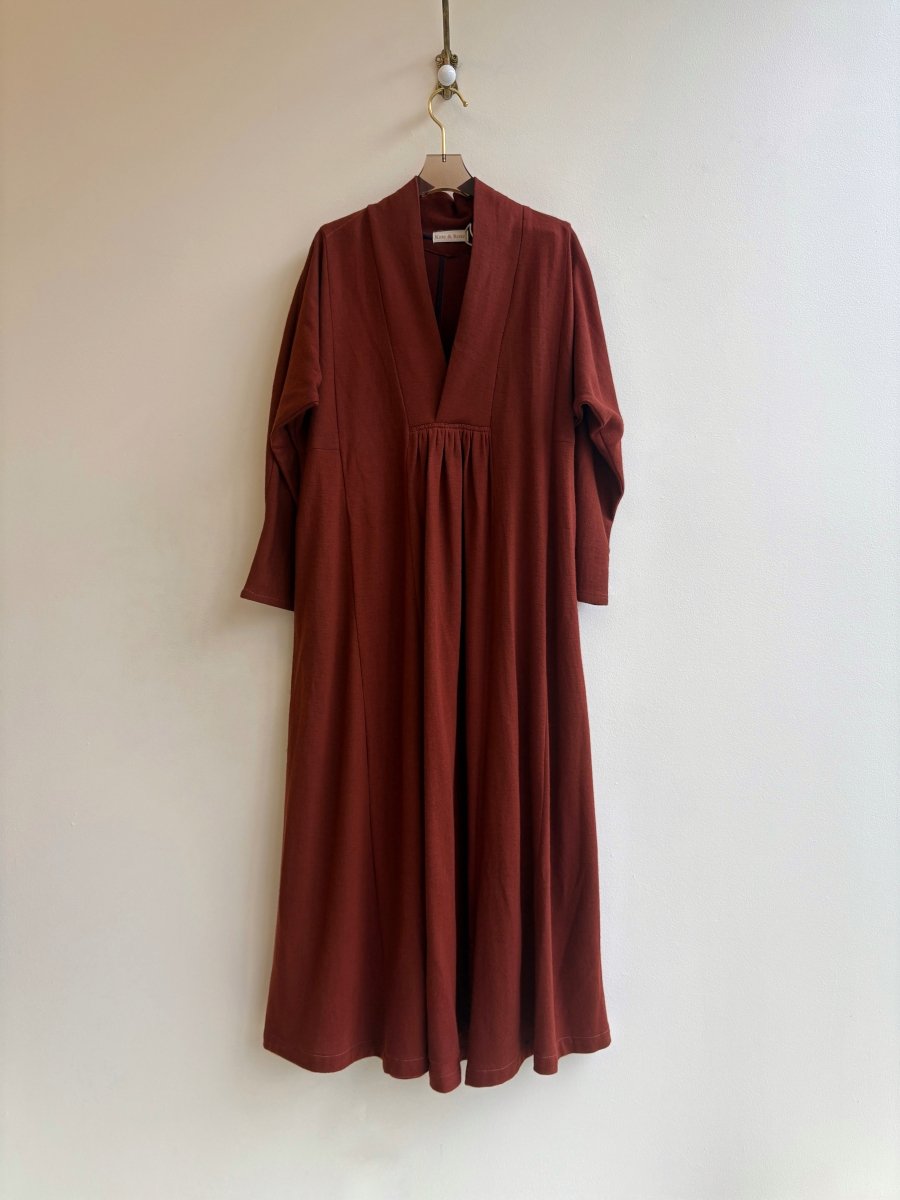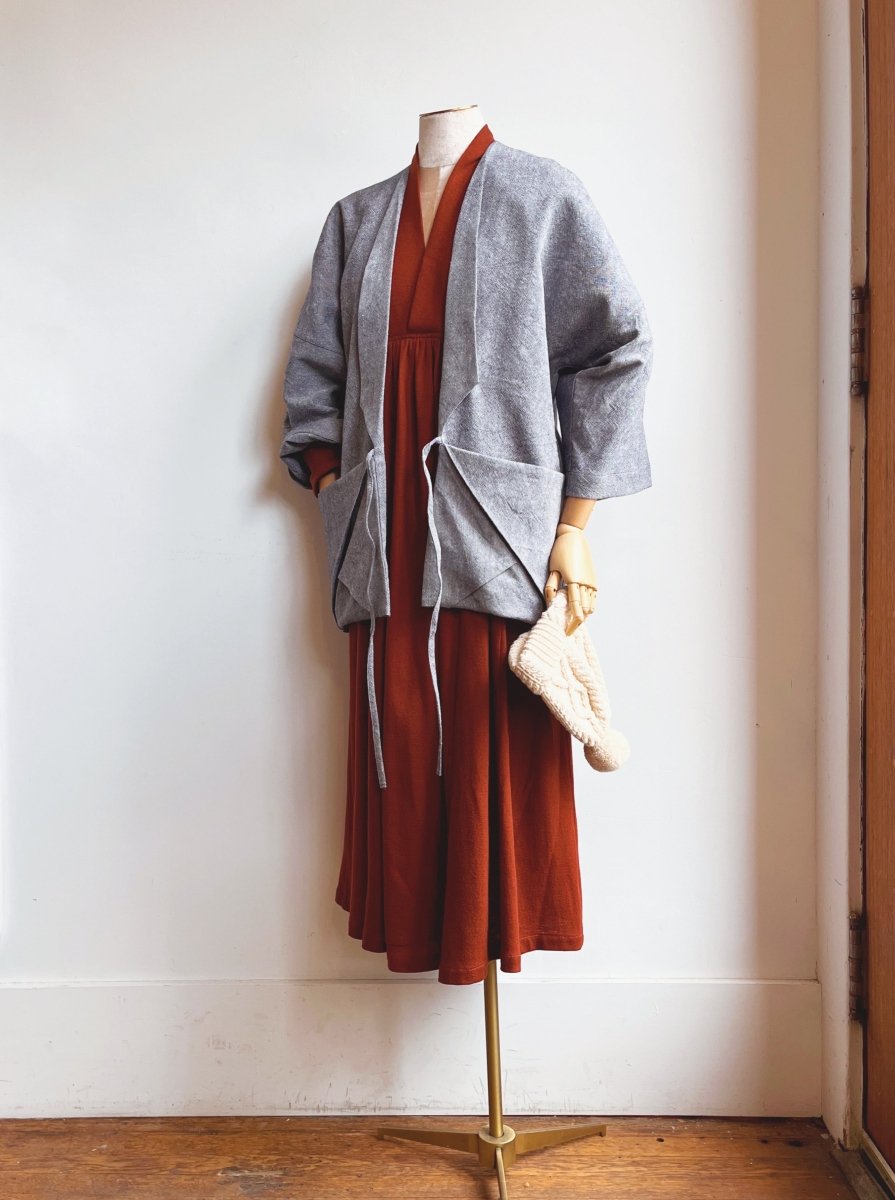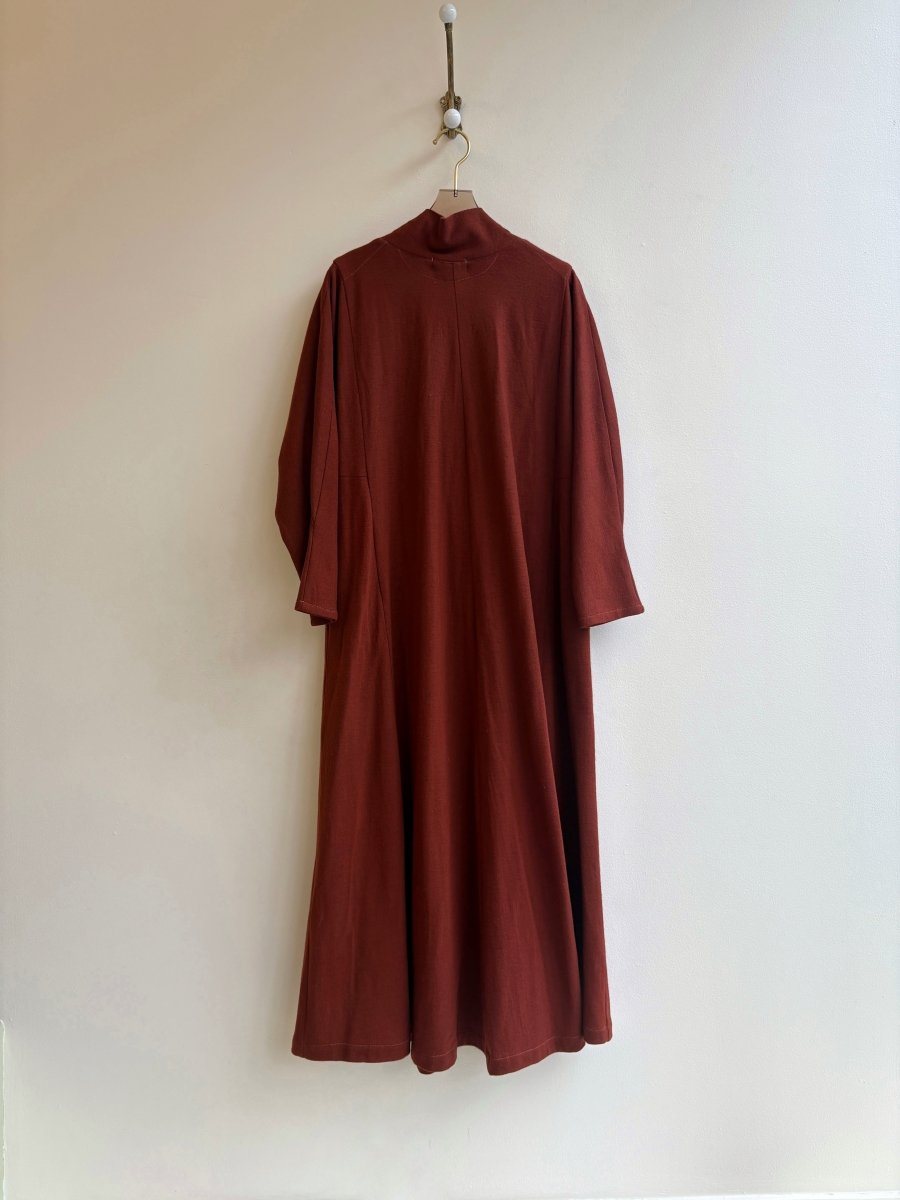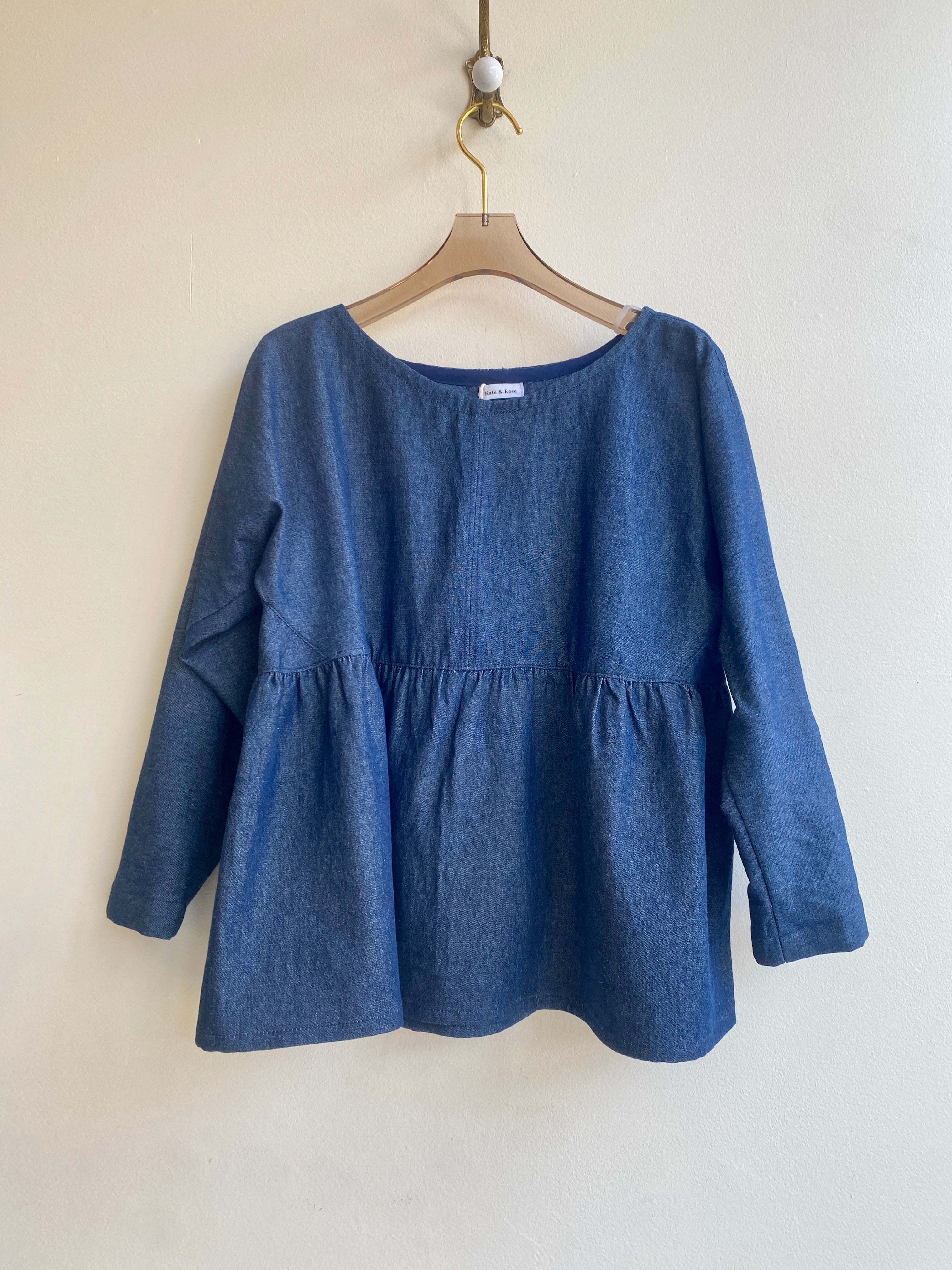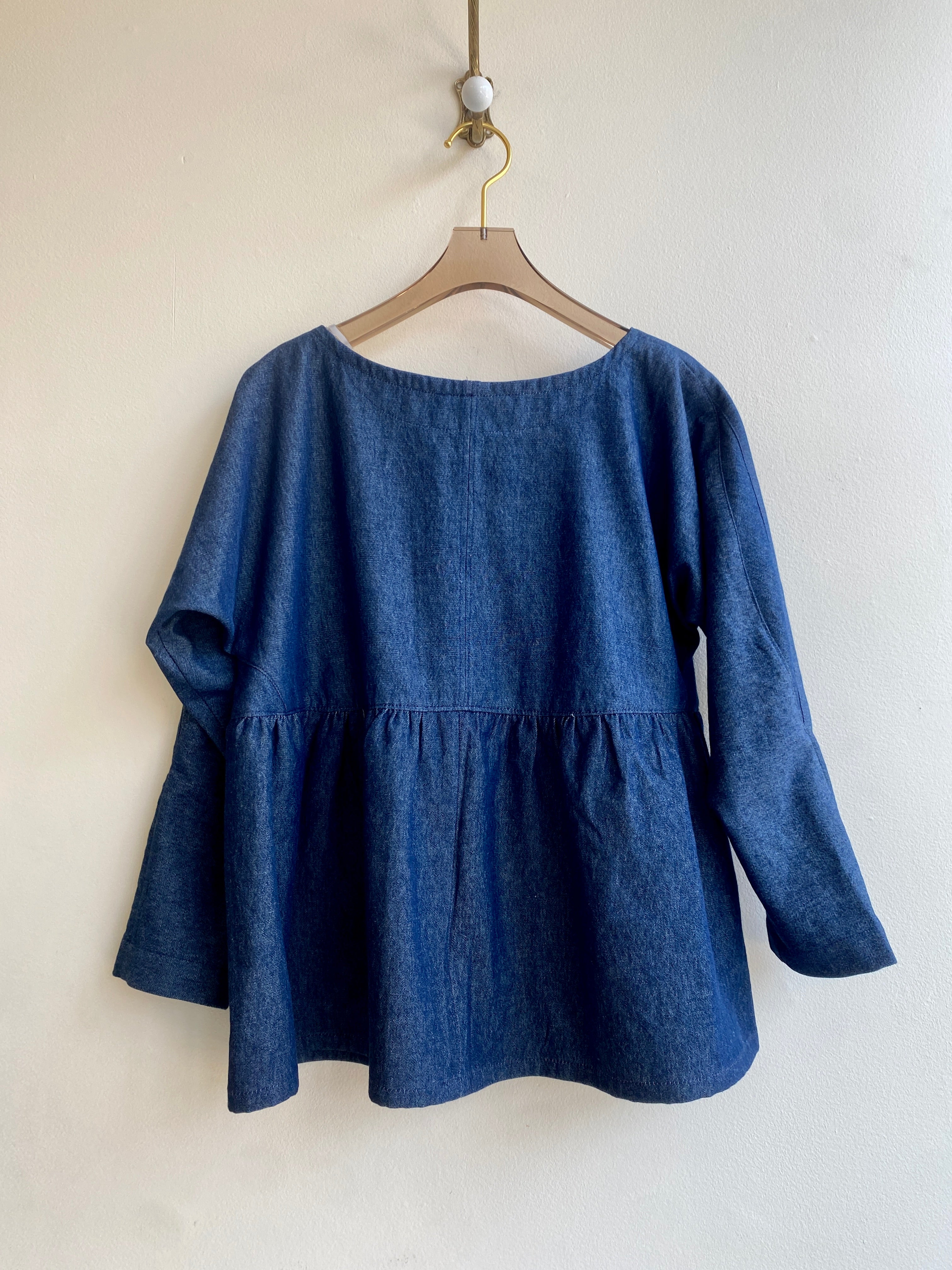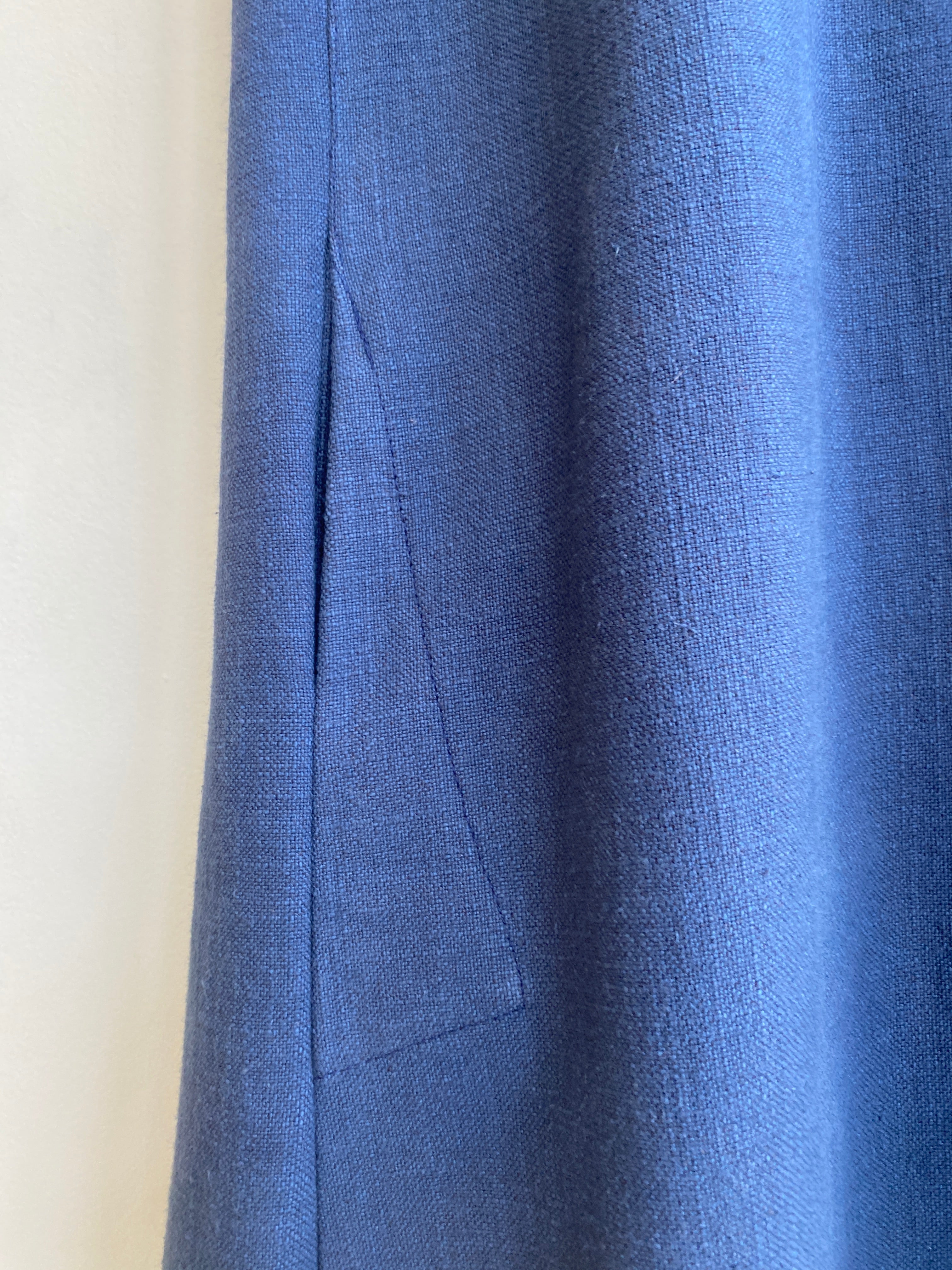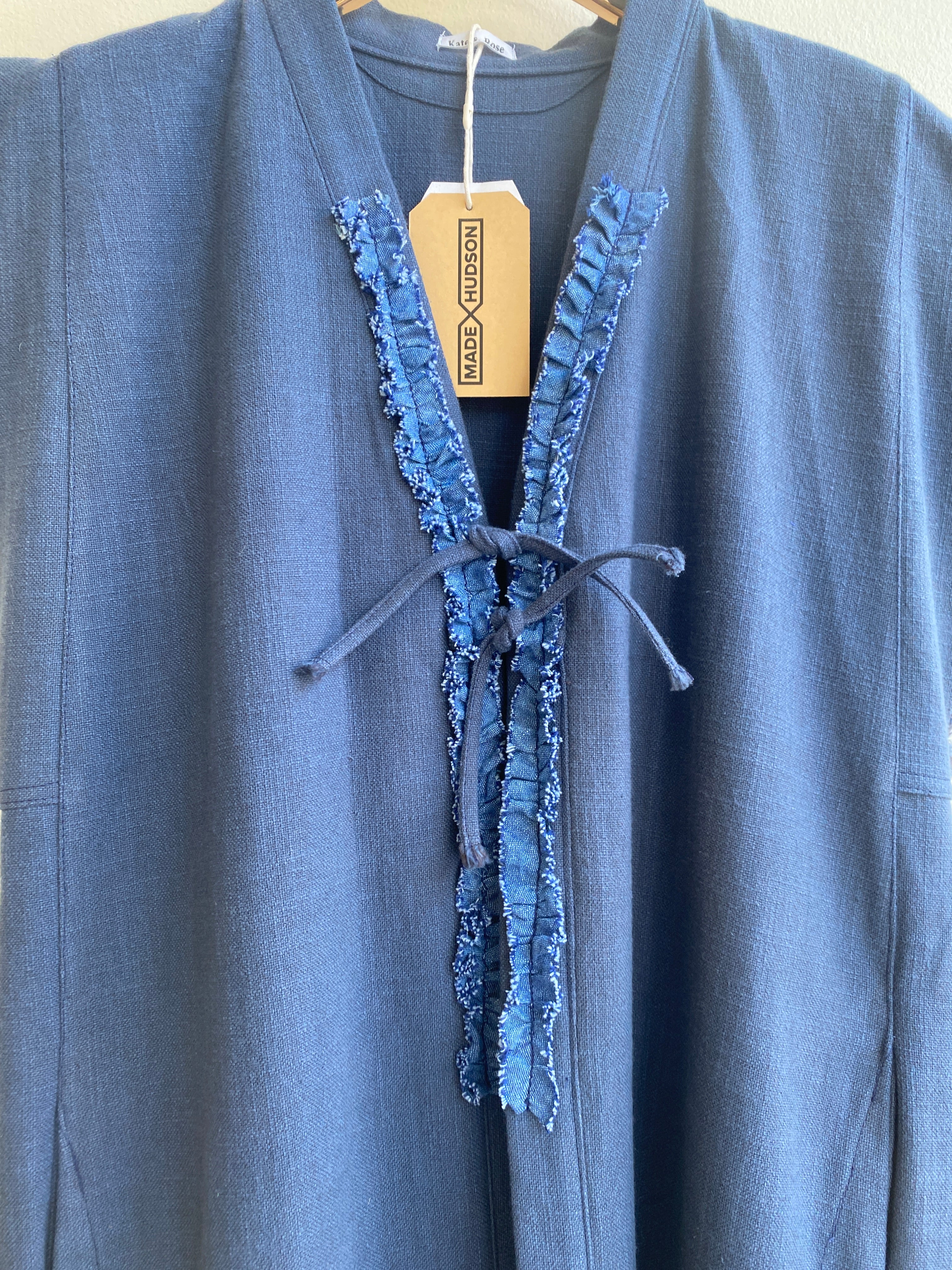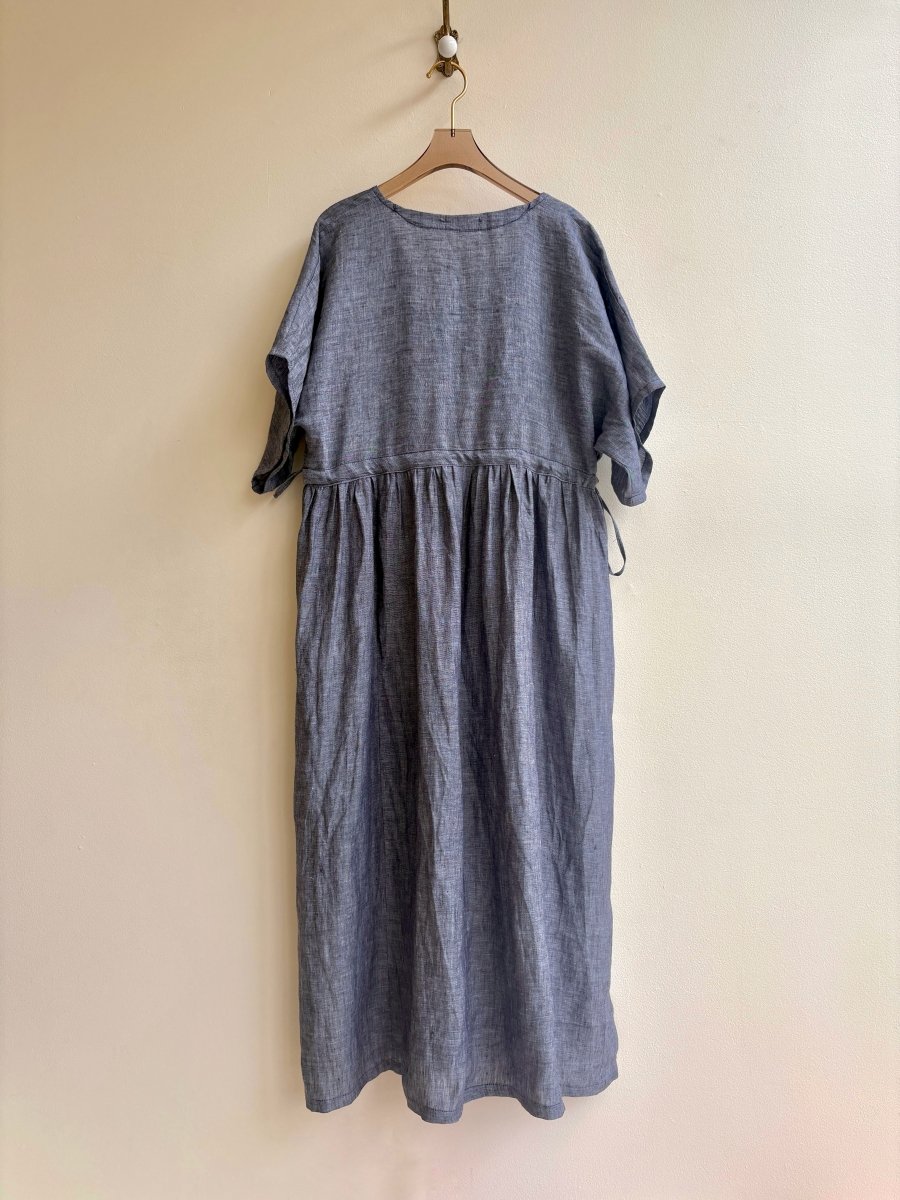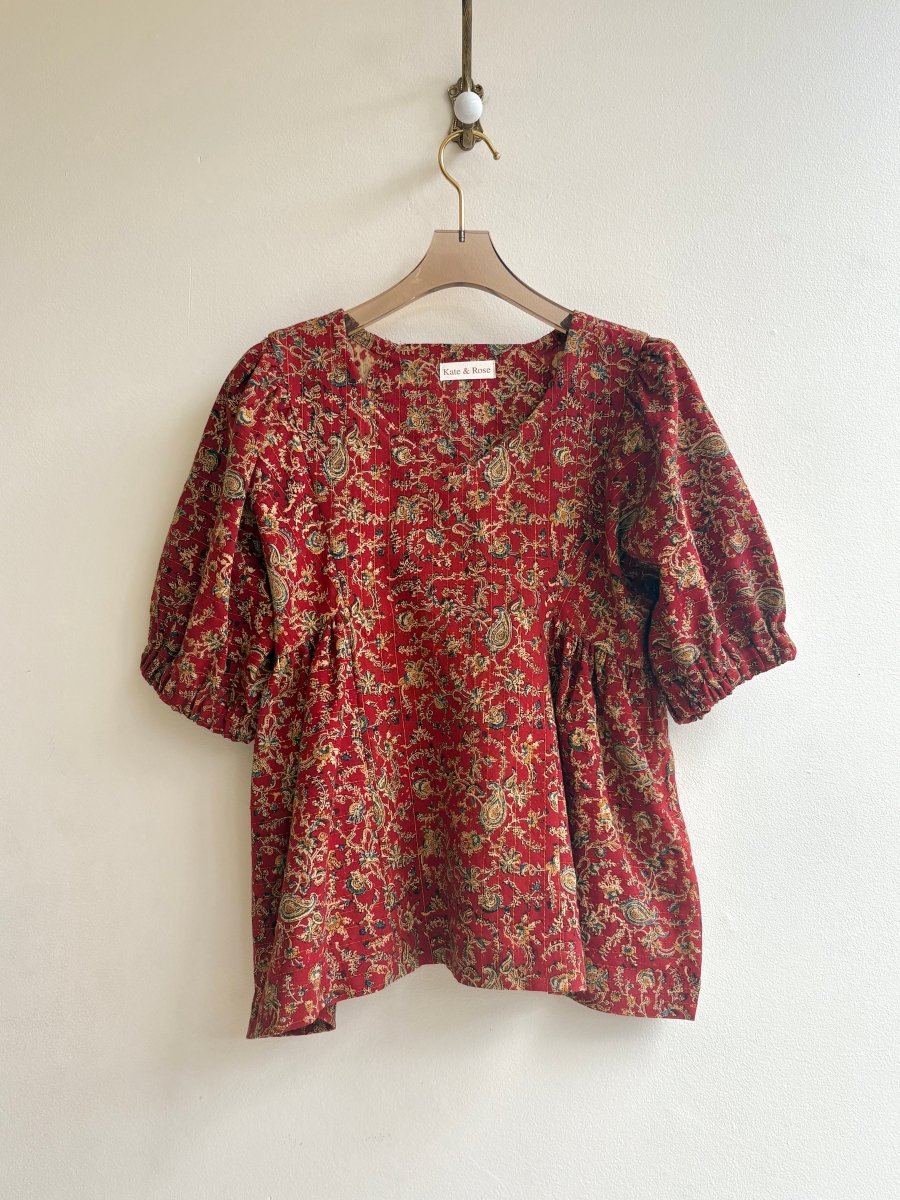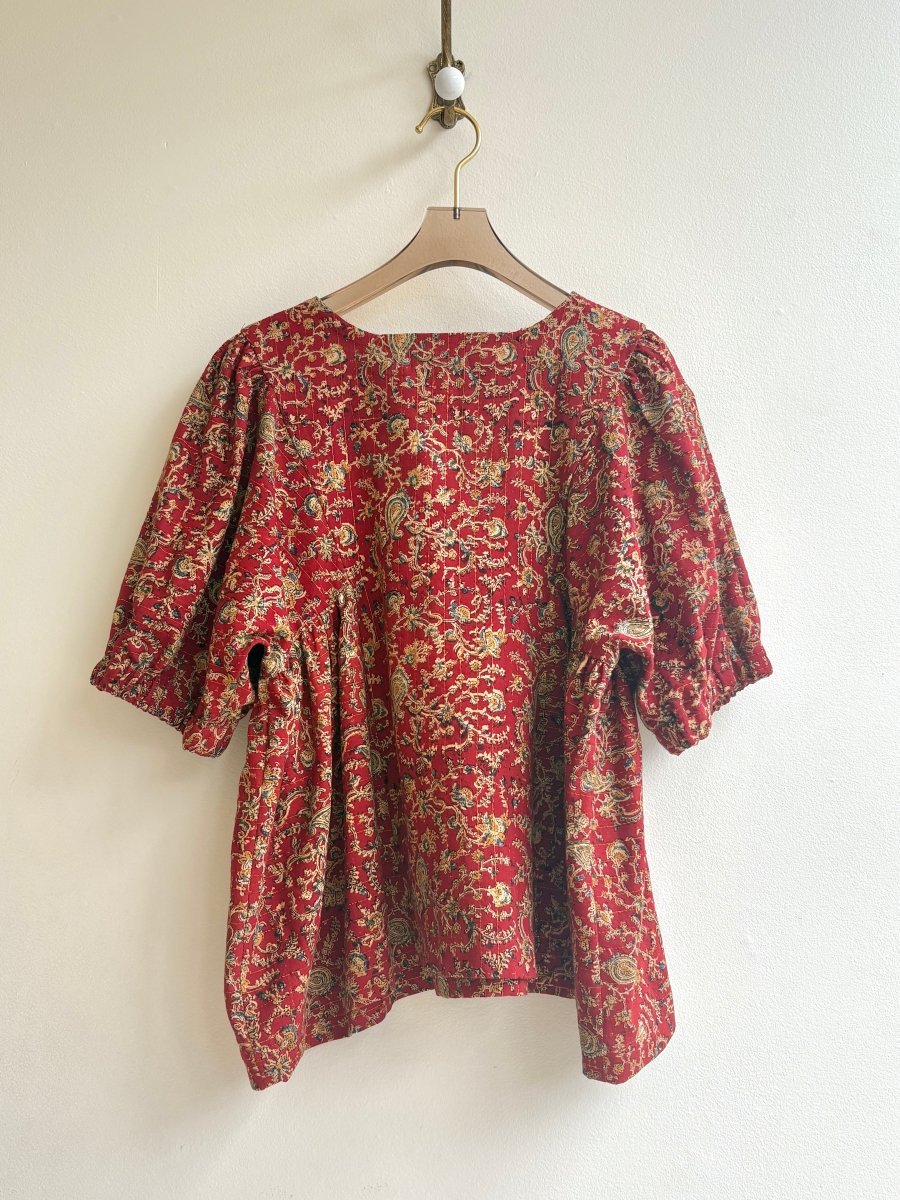Whenever a garment is being developed, the fashion designer must always take fabric usage into account. Depending on how the pattern pieces are cut, there can potentially be a lot of scraps left over, resulting in waste and higher cost of materials. Zero-waste designers aim to avoid leftover fabric entirely, by strategically creating patterns that use every inch of the fabric, almost like fitting puzzle pieces together. The term “zero-waste” can also apply to a designer’s commitment to recycle or reuse any scrap fabric so that no part of it goes to the landfill.

With our Made X Hudson house line, we variously do all of the above. MXH co-founder and designer Sergio Guadarrama applies the zero-waste approach to a couple of our house line garments — the Zero-Waste Dress and Zero-Waste Reversible Cape (pictured on Sergio) which use the full width of the fabric. Scraps from our other designs are repurposed in whatever ways possible, such as the Pencil Pouches made from the off-cuts of our canvas and denim bags and jackets. Anything we can’t use goes to a fabric recycler. And the majority of Made X Hudson clothes are sewn from deadstock or vintage textiles, taking other people’s unused fabrics and turning them into beautiful, wearable garments. (The rest are sewn from sustainable, biodegradable fabrics.)
Meet Kati of Kate & Rose
Our friend Kati Lovasz of Kate & Rose (pictured up top with some of her designs) is another Upstate NY designer we represent in our shops. Kati cuts and sews every garment herself, and she is committed to a zero-waste approach in her designs. We asked her to tell us more about her inspiration and process, and we hope you enjoy this insight into her work as much as we did—
Growing up in Hungary, I always had an interest in folkwear and folk art. Sustainability is inherently a part of the life from which folkwear emerged, and making things in a way that is in harmony with nature‘s cycles. So for example, people used to plant and grow linen in the summertime, then they would spin and weave the fiber from the linen in the winter. There used to be places called ‘spinning halls’ in villages a long time ago, where old and young people would go to socialize in wintertime, the older women would be processing wool or linen and spinning and talking together while the younger people would play music and dance. The music and dances preserved from this tradition are really fun. While this actual practice largely disappeared by WWII, one of the few available ways of preserving national identity during the Communist era of Eastern Europe was to learn, document and pass on folk art practices, including how to make folkwear.
I have long been fascinated by how especially the older styles of Eastern European folkwear take a long, narrow piece of fabric and turn it into clothing with clever cutting, piecing and gathering techniques. All of the fabric was used, partly because nobody wants to throw away a piece of something they’d worked months and months to make, from putting seeds in the ground to taking the finished fabric off the loom. So that‘s where I started. Then I began researching zero-waste folkwear styles from other parts of the world and different eras of history as well. People have long been amazingly inventive in finding solutions to this problem of turning a flat surface into a 3-dimensional object that accommodates a moving body.
When beginning a zero-waste project, what do you first consider?
I begin with the piece of fabric, as the available quantity of fabric and the qualities of the fabric determine what type of garment can be made of it. Sometimes what it can be made into jumps right out at me, other times I look through my notes, books and sketches to see what would be a good match. Sometimes the color ‘asks’ for a certain type of garment. Of course, sometimes the match between fabric and design doesn’t work out so well and then I have to use the piece for scraps. There always is a moment of terror before I cut into a piece of fabric.
How long does it typically take for you to develop a design that leaves zero waste?
How often do you use zero-waste design when developing a pattern?
Is there a favorite zero-waste design of yours that Made X Hudson carries?
What are some of the things you do to repurpose fabric scraps?
This is something in which I’ve taken inspiration from my Hungarian grandmother, who would unravel old sweaters for yarn and use up every scrap of fabric she ever got her hands on. There are so many things one can do with scraps! I’ve made little needle books, coin purses, pincushions; I’ve used scraps to stuff the pincushions; I’ve pieced smaller pieces together to make quilts or fabric for purses. When I’ve had a lot of scraps that are about the same kind of fabric and color, I’ve pieced them together to create the pattern pieces for a whole garment.
Thank you so much, Kati, for your thoughtful answers and your beautiful designs!
To see all of Kati’s current pieces for sale, click here.
See also:
• The Made X Hudson Mix: New, Vintage and Reworked
• What is Slow Fashion?
• What is Deadstock Fabric?
• Meet Regina: Our Vintage-Fabric Fairy Godmother













